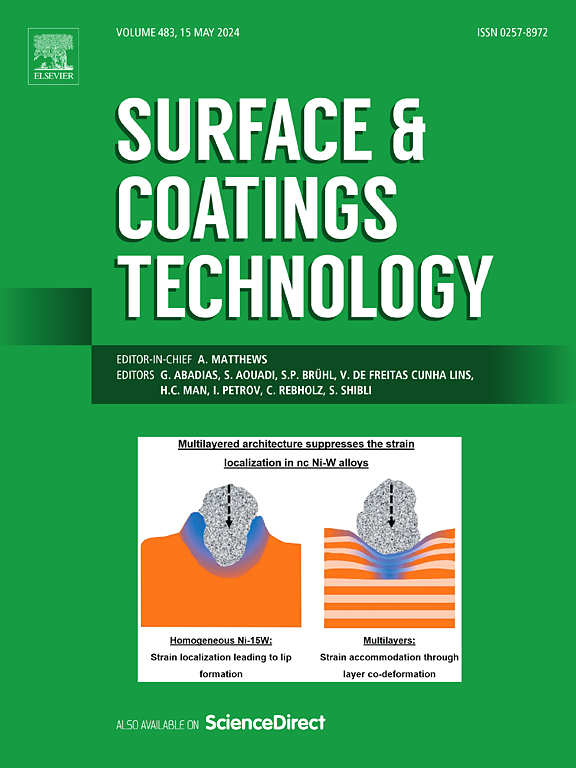Oriented boron nitride composite superhydrophobic surfaces with good thermal conductivity and flashover properties
IF 5.3
2区 材料科学
Q1 MATERIALS SCIENCE, COATINGS & FILMS
引用次数: 0
Abstract
This study proposes the use of polymerization-induced phase separation to impart superhydrophobic properties to the surface of insulating materials. Combined with 3D printing-based pressure-induced alignment technology, the orientation characteristics of boron nitride (BN) fillers are enhanced, improving the thermal conductivity and charge dissipation performance of the insulating material. The results show that the thermal conductivity of the oriented BN composite superhydrophobic surface increased by 354 %, while the dry flashover, wet flashover, and pollution flashover voltages increased by 85 %, 121 %, and 103 %, respectively. This effectively suppressed arc discharge on the superhydrophobic surface and delayed electrical erosion. The enhancement is likely due to the superhydrophobic surface formed via polymerization-induced phase separation, which prevents the formation of continuous liquid flow and inhibits discharge pathways. Additionally, the oriented BN facilitates radial heat flow distribution in the heat source region, reducing the temperature rise in that area. Together with the antifouling properties of the superhydrophobic surface, these effects synergistically improve the material's resistance to electrical erosion.
具有良好导热性能和闪络性能的取向氮化硼复合超疏水表面
本研究提出使用聚合诱导相分离来赋予绝缘材料表面超疏水特性。结合基于3D打印的压力诱导定向技术,增强了氮化硼(BN)填料的取向特性,提高了绝缘材料的导热性和电荷耗散性能。结果表明,取向BN复合材料超疏水表面的导热系数提高了354%,干闪络电压、湿闪络电压和污染闪络电压分别提高了85%、121%和103%。这有效地抑制了超疏水表面的电弧放电,延缓了电侵蚀。这种增强可能是由于聚合诱导的相分离形成了超疏水表面,这阻止了连续液体流动的形成,抑制了放电途径。取向BN有利于热源区域的径向热流分布,降低了热源区域的温升。再加上超疏水表面的防污性能,这些效果协同提高了材料对电侵蚀的抵抗力。
本文章由计算机程序翻译,如有差异,请以英文原文为准。
求助全文
约1分钟内获得全文
求助全文
来源期刊

Surface & Coatings Technology
工程技术-材料科学:膜
CiteScore
10.00
自引率
11.10%
发文量
921
审稿时长
19 days
期刊介绍:
Surface and Coatings Technology is an international archival journal publishing scientific papers on significant developments in surface and interface engineering to modify and improve the surface properties of materials for protection in demanding contact conditions or aggressive environments, or for enhanced functional performance. Contributions range from original scientific articles concerned with fundamental and applied aspects of research or direct applications of metallic, inorganic, organic and composite coatings, to invited reviews of current technology in specific areas. Papers submitted to this journal are expected to be in line with the following aspects in processes, and properties/performance:
A. Processes: Physical and chemical vapour deposition techniques, thermal and plasma spraying, surface modification by directed energy techniques such as ion, electron and laser beams, thermo-chemical treatment, wet chemical and electrochemical processes such as plating, sol-gel coating, anodization, plasma electrolytic oxidation, etc., but excluding painting.
B. Properties/performance: friction performance, wear resistance (e.g., abrasion, erosion, fretting, etc), corrosion and oxidation resistance, thermal protection, diffusion resistance, hydrophilicity/hydrophobicity, and properties relevant to smart materials behaviour and enhanced multifunctional performance for environmental, energy and medical applications, but excluding device aspects.
 求助内容:
求助内容: 应助结果提醒方式:
应助结果提醒方式:


